When to watch in 2024: Overnight of July 20.
Where to look: Look for the bright round moon in the east in the evening of July 20, highest in the sky around midnight, and in the west before sunrise morning on July 21.
Crest of the full moon falls at 10:17 UTC (5:17 a.m. CDT) on July 21. So, if you live in either North or South America, your fullest moon hangs somewhere above the western horizon just before sunrise on July 21.
All full moons rise along the eastern horizon near sunset, and set along the western horizon near sunrise. They are visible all night. At full moon, the sun, Earth and moon are aligned in space, with Earth in the middle. The moon’s day side – its fully lighted hemisphere – directly faces us. That’s why the moon appears full. Note that the moon will look full and round the day before and the day after it reaches its fullest.
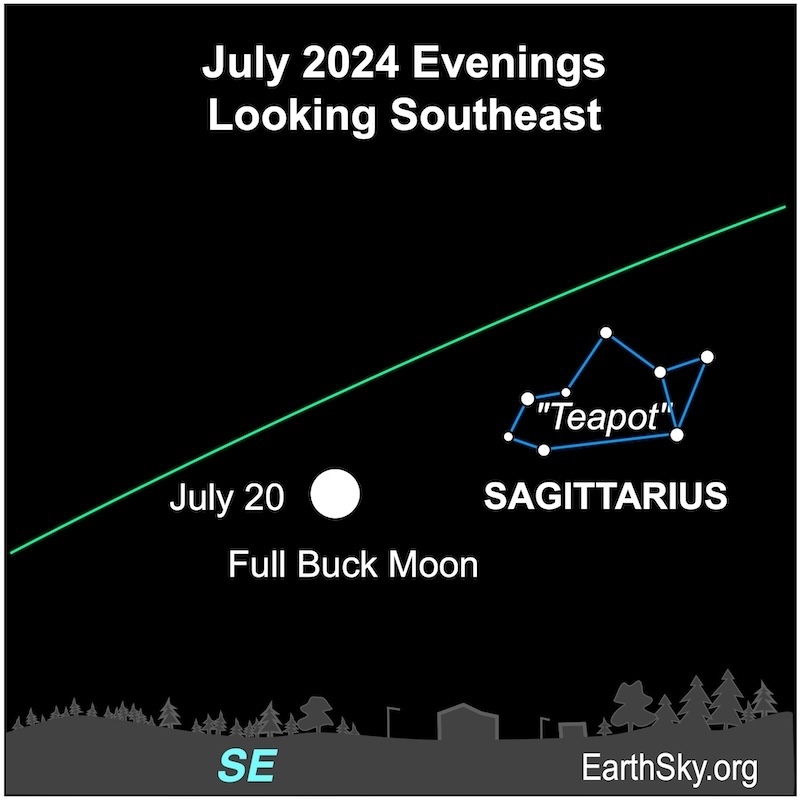
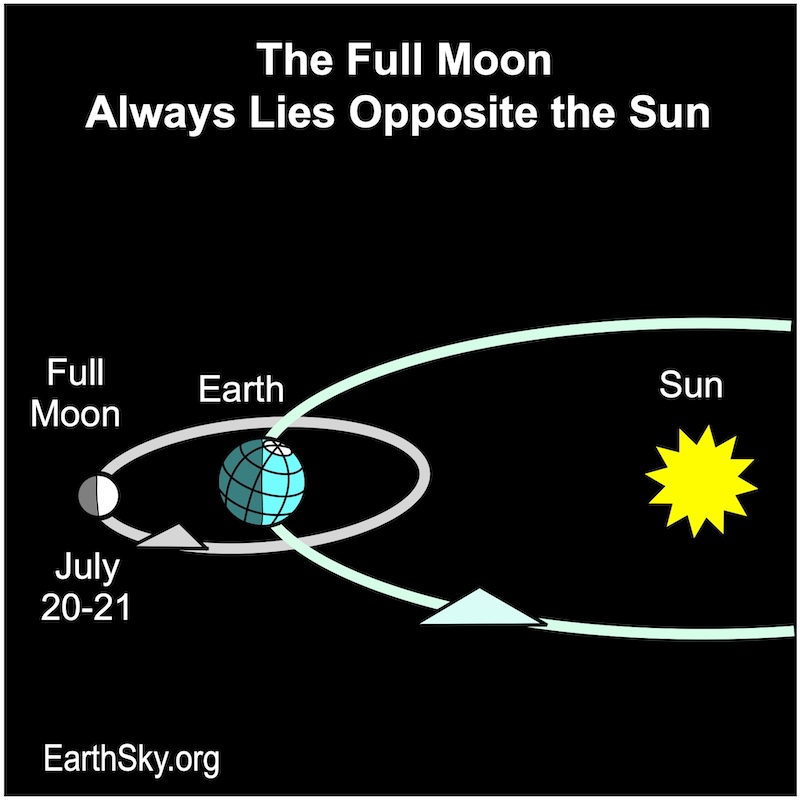
It’s the Buck Moon
All the full moons have names. Popular nicknames for the July full moon include the Feather Molting Moon and the Salmon Moon, but Buck Moon is the most common. At this time of year the antlers of male deer grow rapidly, sometimes to an impressive size. Hence, the name Buck Moon. Some Native Americans used the names Thunder Moon, Berry Moon and Raspberry Moon.
Read more: Full moon names by month and by season
Read more: Traditional full moon names and their meanings
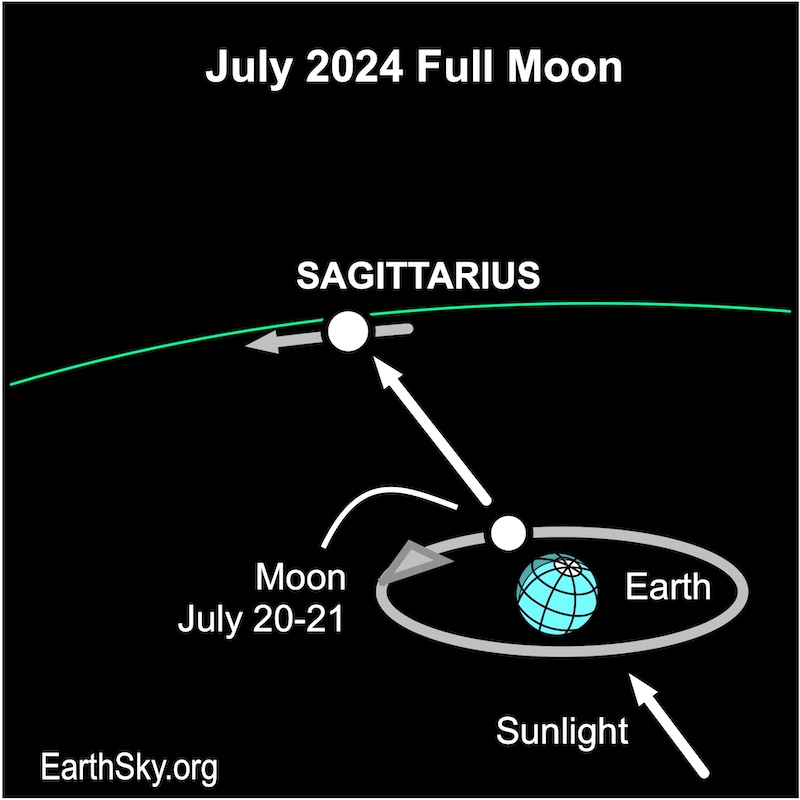
July full moon is in Sagittarius in 2024
The July full moon can lie in front of two constellations of the zodiac. Most frequently it appears in Sagittarius the Archer, and less often in the constellation to Sagittarius’ east, Capricornus the Sea Goat. This full moon glows in far eastern Sagittarius near its border with Capricornus. Because of the bright moonlight, the stars in the vicinity of the moon will be very difficult to see with the unaided eye.
This July full moon mimics January sun
Because a full moon more or less stays opposite the sun, the full moon’s nighttime path mimics the sun’s daytime path from six months ago, or six months hence. In this case, it’s following the path the sun took at the end of the third week in January. Since the January sun arcs relatively low across the sky, so does the July full moon.
North of the Arctic Circle, the January sun either never climbs above the horizon or only a short bit above it. This July full moon does the same.
Meanwhile, in the Southern Hemisphere, the moon’s path across the sky will nearly mirror that of the high summer solstice sun.
And, south of the Antarctic Circle, the moon will be out for 24 hours around the clock or nearly so, matching the path of the January sun.
Arc of the July full moon, Northern Hemisphere
The moon’s arc across our sky varies from month to month and from season to season. Every full moon rises somewhere along the eastern horizon, opposite the sun as it sets in the west. And every full moon arcs across the sky throughout the night and sets along the western horizon around dawn. For us in the Northern Hemisphere, in most years the arc of July’s full moon is lower than any other, except June’s.
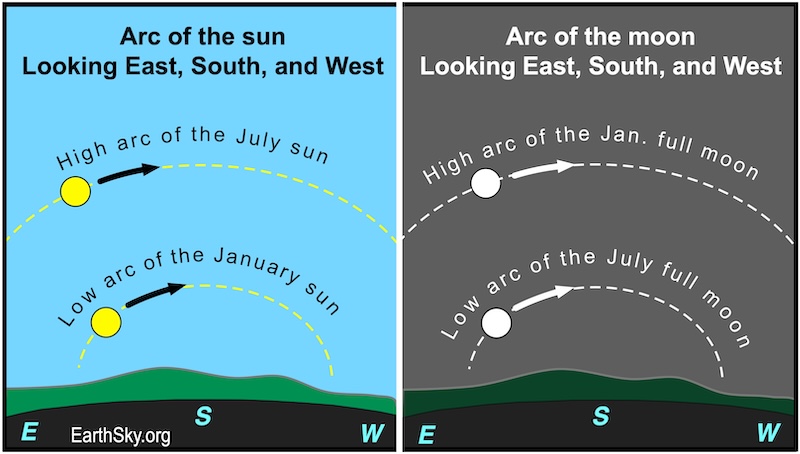
Arc of the July full moon, Southern Hemisphere
For those in the Southern Hemisphere, the July full moon’s arc across the sky reaches not quite as high as June’s, since it matches the path of January’s sun.
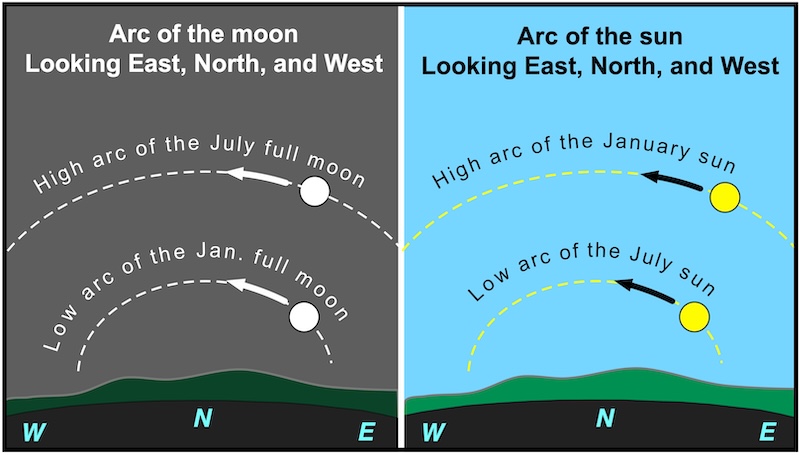
Bottom line: The July full moon – the Buck Moon – falls overnight on July 20, reaching its fullest at 10:17 UTC (5:17 a.m. CDT) the morning of July 21.











